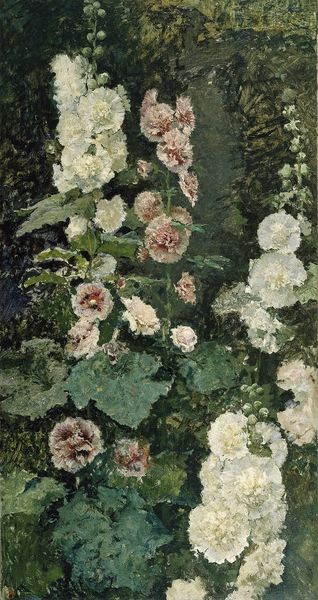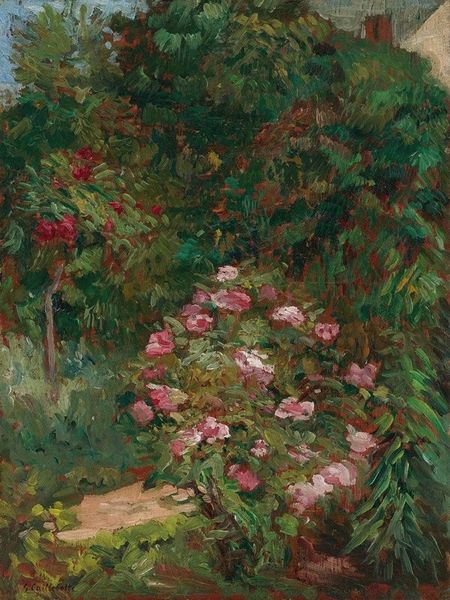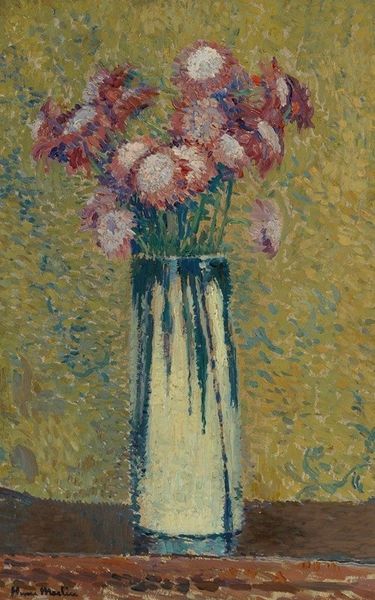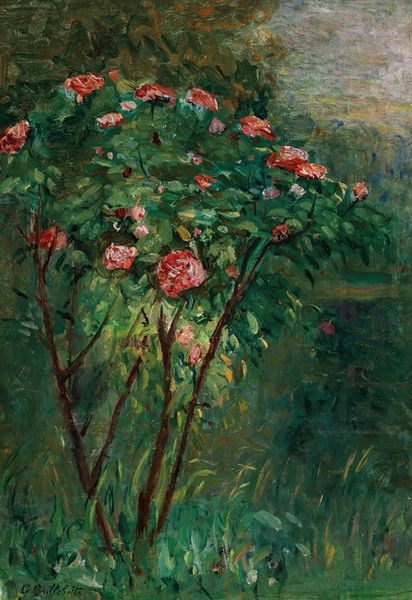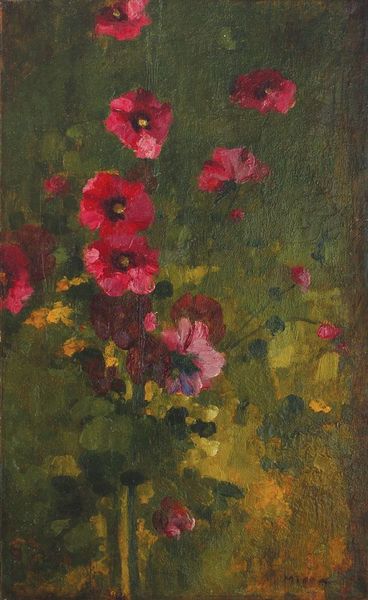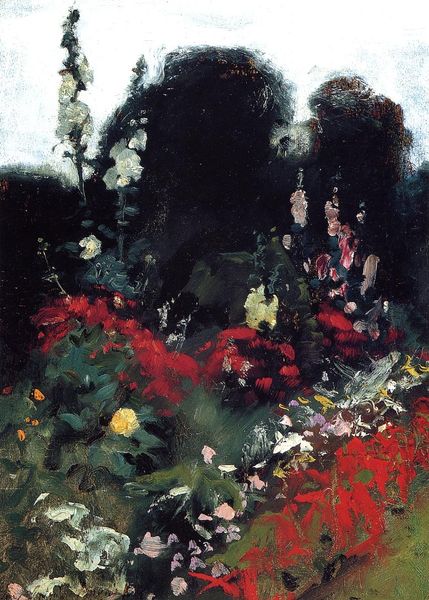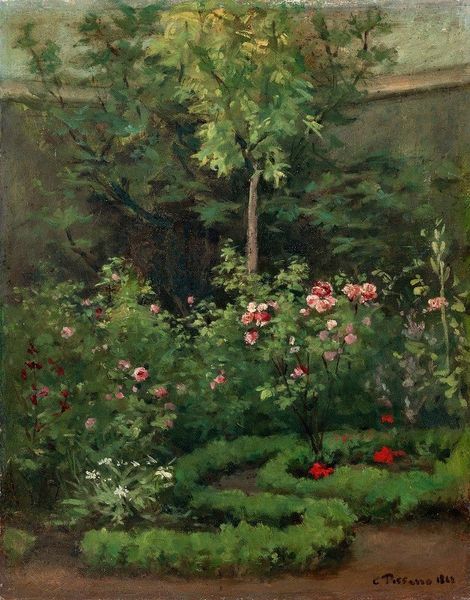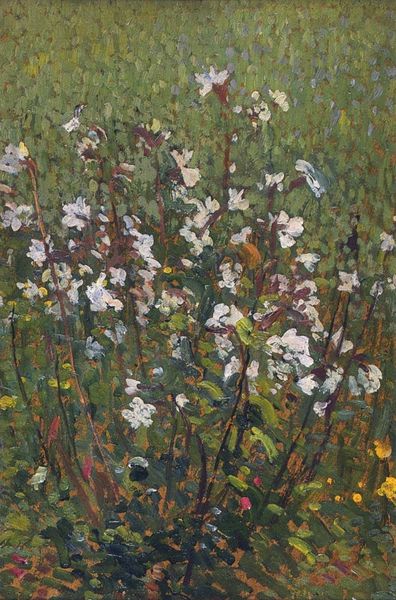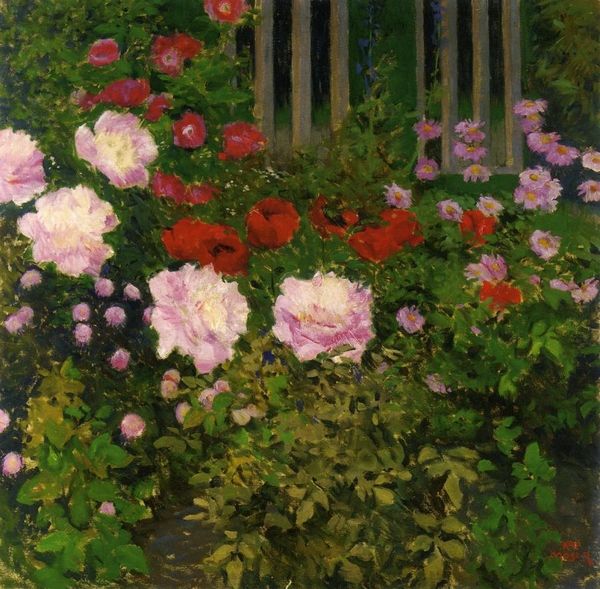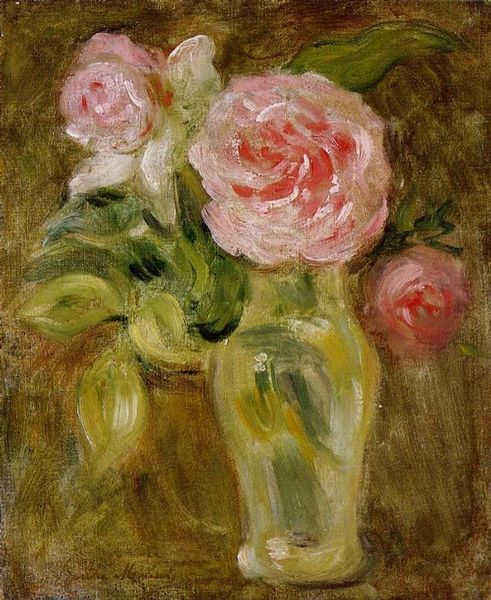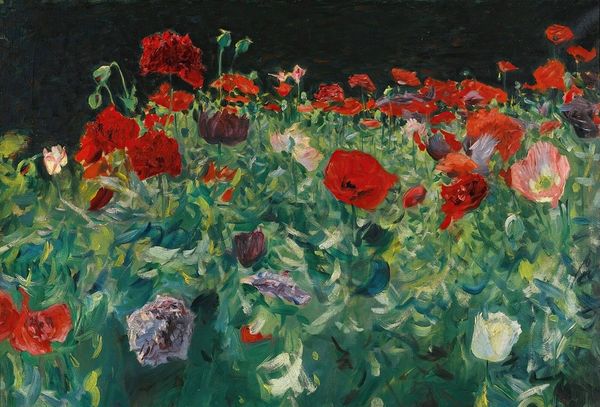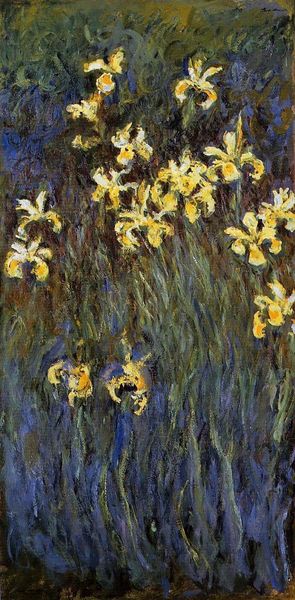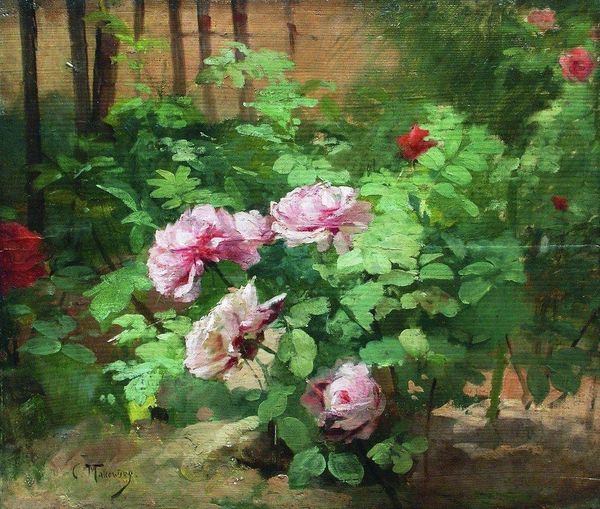
painting, oil-paint
#
impressionist
#
painting
#
impressionism
#
oil-paint
#
landscape
#
flower
#
impressionist landscape
#
plant
Copyright: Public domain
Editor: This is "Mallow," an oil painting by Ilya Repin from 1880. It looks like a vibrant, loosely painted scene of flowers in a garden. What can you tell me about this work? Curator: Focusing on the materials and production, what strikes me immediately is the viscosity of the paint and the artist’s evident engagement with the physical substance. It shows a remarkable use of oil paint, pushing its boundaries and showing the labor involved. I am particularly interested in what these choices tell us about art production during the late 19th century. Editor: Could you expand on the techniques used, like brushwork or the texture of the paint, and perhaps why they matter in this context? Curator: Repin seems fascinated by the very act of applying the paint. Note the deliberate impasto and visible brushstrokes. How do these features interact with our understanding of Realism and Impressionism at the time, two styles associated with rapid social and industrial change? I'm also keen to look into where the pigment was sourced. These sorts of things tell stories, don’t they? Editor: Absolutely. Now that you mention it, considering Repin's socio-political views, how might the accessibility, cost, or origin of materials available during that period influenced the techniques displayed here, reflecting potential socio-economic or artistic messages he was trying to convey? Curator: Exactly! Considering Repin’s realist style, could the vibrant hues reflect a move toward capturing transient, more democratized pleasures in Russian society, perhaps accessible to those outside the elite? Or might it signify a specific engagement with technological innovations in pigment creation, allowing for new shades that speak to shifting aesthetics? Editor: That's an intriguing connection! I'd not thought about that before. Thanks! Curator: Thinking about the implications, perhaps we should delve further into the materiality of this painting, investigating further the materials available to artists and the broader social context of production and consumption?
Comments
No comments
Be the first to comment and join the conversation on the ultimate creative platform.
